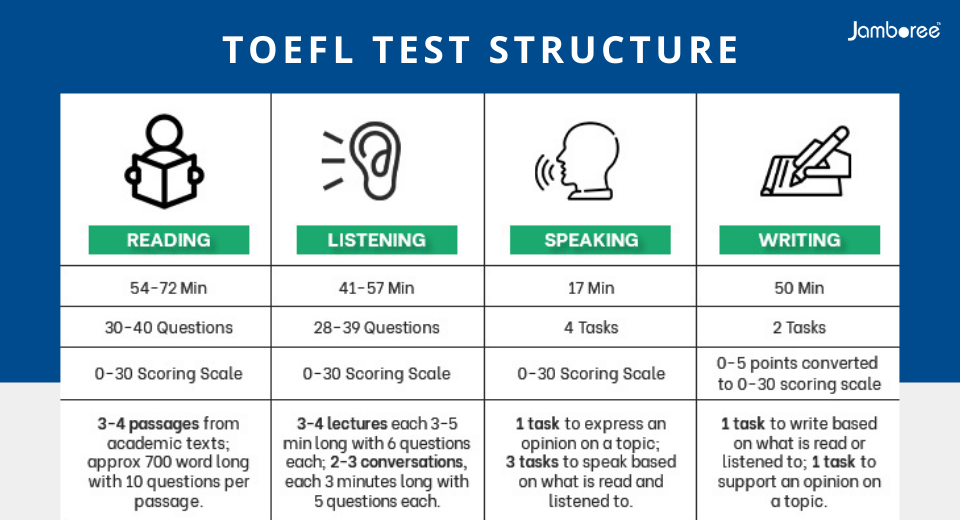Discover Important Tips for Success in Your Following TOEFL Method Examination
Navigating the labyrinth of the TOEFL technique test can be intimidating without a well-structured roadmap. As an aspirant, comprehending the examination format, grasping time monitoring, and developing necessary language abilities across reading, creating, paying attention and speaking sections are vital. The journey to success calls for a meticulous plan, authentic method products, and valuable feedback. As we start this expedition, one might question the most efficient methods to ace the examination. Keep tuned to uncover more.
Understanding the Structure of the TOEFL Exam
Before you embark on the trip of understanding the TOEFL test, understanding its structure is of critical significance. The TOEFL examination is separated right into four sections: analysis, listening, talking, and composing. Each section is developed to evaluate the proficiency of non-native English speakers being used and recognizing the English language as it reads, composed, heard, and talked in school setups. The analysis and listening sections are multiple-choice, while the talking and composing sections call for built actions. Each section is racked up on a range of 0 to 30, with the overall TOEFL score varying from 0 to 120. Comprehending this structure permits trainees to better prepare and plan for the examination.
Approaches for Understanding the Reading Area

Tips to Excel in the Composing Area
To stand out in the writing area of the TOEFL examination, a structured strategy is important. Time administration is also critical; assigning adequate time for preparation, composing, and changing can lead to a much more polished and meaningful essay. Practice and responses are essential to improving these skills.
Techniques for Enhancing Efficiency in the Speaking Area

Efficient Techniques for Acing the Listening Section

Acing the paying attention section of the TOEFL test requires a mix of sharp focus and reliable method. The primary step is to establish active paying attention skills. This entails taking note of the audio speaker's major ideas, sustaining details, and the objective of the speech. Note-taking is crucial. As the examination doesn't allow rewinding, taking down vital points aids recall information throughout the response stage.

Verdict
To conclude, acing the TOEFL technique examination calls for a strategic approach that encompasses understanding the test structure, and mastering reading, writing, talking, and paying attention areas - toefl practice test. Efficient time monitoring, routine exercise with genuine materials, and interaction with native speakers are important aspects. By vigilantly following these tips and seeking continual responses, one can dramatically improve their test performance and confidence